Search Results

- IDNO:
- 003348
- Title:
- Lump Coal Being Loaded onto Railroad Cars
- Description:
- 'All sizes of 'White Oak' prepared coal are loaded into railroad cars with loading booms to minimize breakage and preserve the best appearance of the coal. It would be useless to carefully mine and screen our coal if we did not use proper care in loading it into the railroad cars. These booms lower to the bottom of the car when it is first placed under the tipple for loading, and raised from time to time as the car fills up. Note how perfectly screened this lump coal appears on the boom! Not a sign of slack to be seen. Treated for dust if desired.'
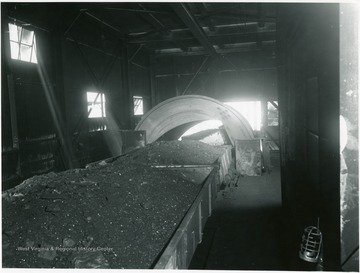
- IDNO:
- 003355
- Title:
- Link-Belt Rotary Mine Car Dumper, Pocahontas Fuel Company, Itmann, W. Va.
- Date:
- 1951/11
- Description:
- 'Link-Belt 33460, Link-Belt rotary mine car dumper at Heavy-Media coal preparation plant of Pocahontas Fuel Co. Inc., Itmann, W. Va. Capacity of plant is 750 tons of raw coal per hour. Nov. 1951'
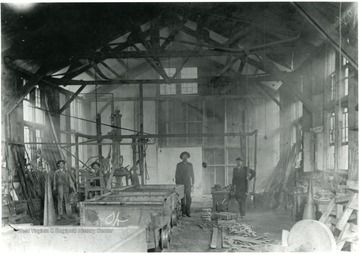
- IDNO:
- 003356
- Title:
- Eccles No. 5 Machine Shop
- Description:
- 'Sherman A. Clay in center in front of door. He is donor's grandfather.'
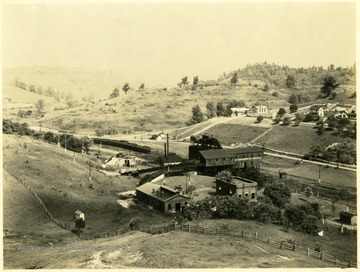
- IDNO:
- 003364
- Title:
- Consolidation Coal Company Mine No. 32, Fairmont, W. Va.
- Description:
- Scenic view of Mine No. 32 at Fairmont, W. Va.

- IDNO:
- 003366
- Title:
- Raw Coal Conveyor System
- Description:
- Conveyor belt in the middle of the mountains.
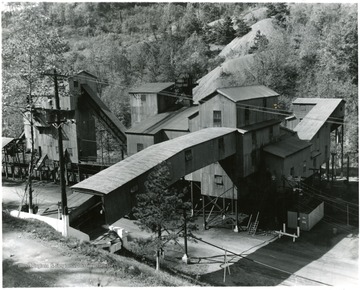
- IDNO:
- 003377
- Title:
- Mine No. 155 Tipple, Consolidation Coal Company, Van Lear, Kentucky
- Date:
- 1947/10/20
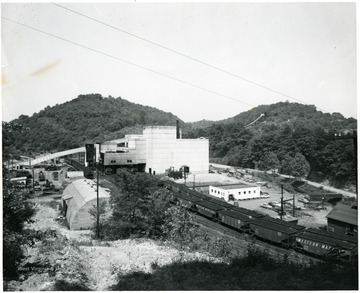
- IDNO:
- 003378
- Title:
- Williams Preparation Plant, Consolidation Coal Company
- Description:
- Filled coal cars are lined up outside of the Williams Preparation Plant.
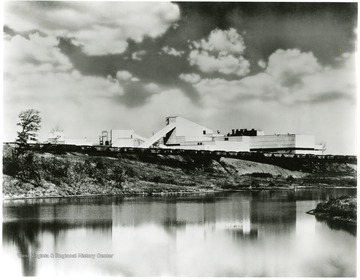
- IDNO:
- 003380
- Title:
- Georgetown Preparation Plant
- Description:
- Division of the Pittsburgh Consolidation Coal Co.
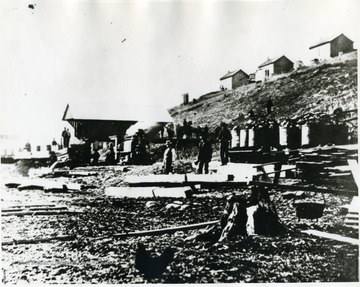
- IDNO:
- 003382
- Title:
- Gaston Mine Plant, Gaston Gas Coal Company
- Description:
- Mine was 1/2 mile south of Hunsaker bridge on West Fork River. Owned by James Otis Watson, the mine was founded in 1875 and closed in 1925.
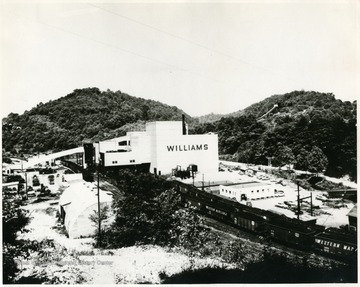
- IDNO:
- 003386
- Title:
- Williams Preparation Plant, Consolidation Coal Company
- Date:
- ca. 1953
- Description:
- 'An overall view of the new plant at Williams No. 98 Mine of Consolidation Coal Compnay (W. Va.) is shown. Coal comes from the mine on a 558 foot conveyor belt at the left to the top of the plant past the old tipple (shown dark against the new structure) which is now being removed. Through intricate processes it is screened and sized and loaded into railroad cars on four tracks which pass under the tipple (center). Impurities removed from the coal are carried on another long conveyor to a hilltop slate dump shown in the extreme upper right corner. This mine is named for Eugene Williams of Romney, W. Va. Mr. Williams is Chairman of the Board of Western Maryland Railroad. Williams Preparation Plant, convering over three acres of floor space on eight levels is a steel and concrete structure 100 feet high and fully enclosed without a single window. this windowless 'factory' is a mystifying innovation to all who visit the plant. It is equipped with a ventilating system, fluorescent lighting, and a complete vacuum type dust collection system that gather in all air borne particles at their source. All of these measures promote health, safety and good housekeeping. The raw coal is delivered to the preparation plant at a rate of 450 tons per hour by a 558 foot belt which picks up the coal at the rotary mine car dump at the bottom of the slope. After the coal is crushed down to 5 inch top size the raw coal is fed into a 15 foot diameter chance cone yielding 278 tons of 'float-kleen' coal per hour. The washing process operates on the principle of gravity separation, a fluid mass of sand and water being utilized as the density medium. Designed and built by Fairmont Machinery Company placed in operation March 31, 1953; No windows, dust collection system; track storage, 100 empties, 80 loads; Present daily capacity, 8500 tons; potential daily capacity, 15,000 tons; coal reserves, 80,000,000 tones, Pittsburgh seam; slack dried, centrifugal and thermal dryers; oil treating facilities for stoker grades; served by two railroads, WM and B&O; Plant named for Eugene Williams of Romney, W. Va. Board Chairman of the Western Maryland Railroad.'

- IDNO:
- 003387
- Title:
- Acme Mine
- Description:
- View of mine buildings at the Acme Mine.

- IDNO:
- 003389
- Title:
- Harmar Preparation Plant
- Date:
- 1955/05/03
- Description:
- Scenic view of the Harmar mine facilities.











